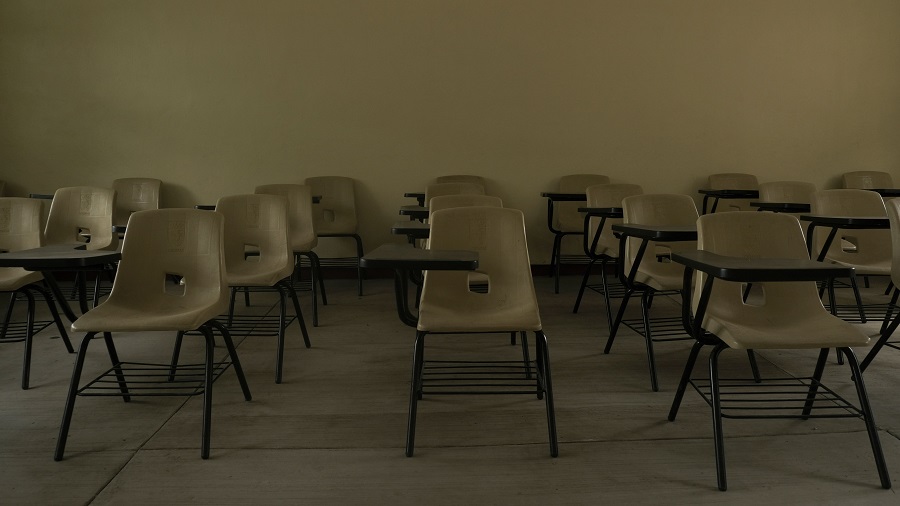RIO DE JANEIRO, BRAZIL – Overall, Latin America is the region that imposed the longest school closures in the world, according to UNICEF, with a slow and in some cases non-existent resumption of in-person classes, which has a virtually incalculable long-term impact on children affected in their education, confinement and lack of socialization.
“School decisions in the event of a pandemic must balance the risks of reopening and of keeping schools closed,” World Bank Global Director of Education Jaime Saavedra said Monday.

However, most countries on the continent opened shopping malls, indoor restaurants and businesses of all kinds before the classrooms, although it has been proven that children contract and spread the virus at a lower rate than adults.
“Data from countries where schools have been reopened show that, with adequate care, they pose a low risk of disease transmission for both students and teachers,” Saavedra added.
A few days earlier he had reiterated his warning, with the necessary prevention guidelines: “Losses to children are immense. It is necessary to enforce protocols, organize transportation to school, reduce interaction with adults, vaccinate teachers as quickly as possible. But going back to school is an emergency.”
In several countries, children are not learning to read and have been away from classrooms for over 15 months. Some governments have decided they would pass the school year, as if they were doing them a favor. Concurrently, millions of fathers (and mothers in particular) are unable to work out of their homes because they must take care of their children.
On the other hand, in wealthier countries, the bulk of students have already returned to school, which foreshadows greater inequality in the future with respect to less developed countries.
In June, NGO Save the Children reported that children in poor countries lost two-thirds more school days to the pandemic than students in wealthier parts of the world. The impact was also reflected in gender inequalities, with girls in developing countries having 22% fewer hours of schooling than boys. These gaps continue to widen with each passing day that in-person classes are not resumed.
In this respect, a study conducted in May in São Paulo, Brazil’s largest city, showed that high school students in remote education learned 27.5% less than they would have in classroom settings, according to assessments before and during the pandemic. In turn, the risk of school dropout increases by 365% with distance learning.
“We are facing the greatest education crisis in history,” said Luis Benveniste, director of human development research in Latin America at the World Bank, quoted by the Wall Street Journal. “There is no event in recent history that has led to schools closing for such a long period of time. Human capital and productivity will be affected for a whole generation if this continues.”
Specialists are clear about the potential consequences: less education, fewer opportunities, more poverty, violence and a migration crisis.
The virtual world, a limited but useful tool to deal with the health emergency, is an impossibility in many areas of the continent, due to the scarce telecommunications infrastructure and the lack of equipment (computers, cell phones, tablets and even electricity) in millions of homes.
Some governments launched educational programs through radio and television, which in most cases prevents students from asking questions and assessing the contents learned.
The Comparte Foundation reported days ago in its Impact of confinement on Latin American children study the “devastating consequences” of quarantines in the 5 countries where it works (Argentina, Chile, Ecuador, Honduras and Nicaragua), detecting a “notable increase in domestic violence and physical and verbal punishment.”
Latin American children’s health was also affected by this scenario. In Ecuador, for example, 20% of the students surveyed were overweight and 11% were obese,” according to the same study. On the other hand, Nicaraguan youths said they had sleep disorders, and “26% had difficulty sleeping for fear of infection or family bereavement,” the foundation reported.
While no one disputes the need for protocols, as well as the priority of educators in vaccination campaigns, the studies conducted point to the low transmission of Covid in schools. These are not estimates or prognoses, but rather analyses of reopening cases.
In Tennessee, Vanderbilt University found low infection rates in classrooms even when the state had one of the highest number of cases in the United States, one of the world’s most affected countries, as the use of masks and physical distancing were respected.
And despite the emergence of new variants, children continue to be by far the least affected by the disease, in terms of health.
Source: Infobae

